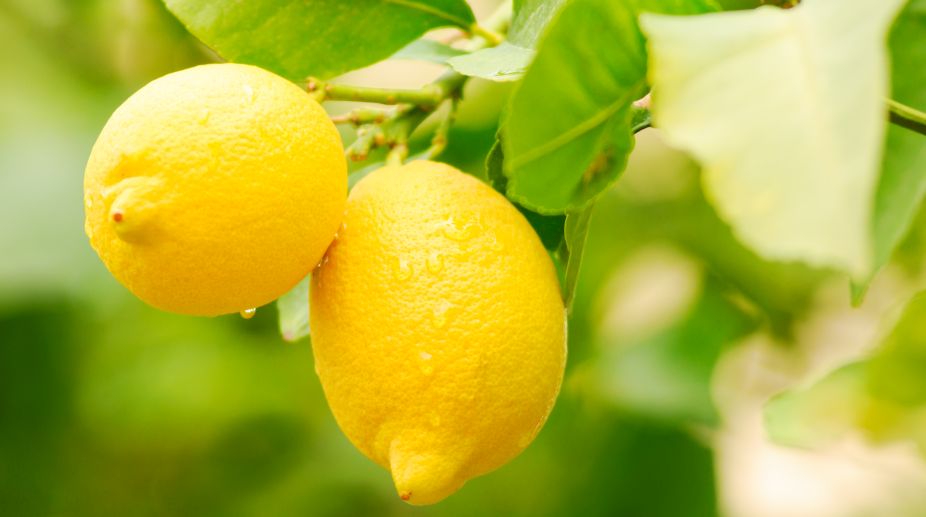Despite countless claims to the contrary, citrus trees are surprisingly simple to grow in most areas of our environmentally diverse country and if you begin before the month is over, there is still time to add locally suitable citrus to your garden before temperatures begin to climb.
Citrus, of all varieties, thrive in fertile soil which must be well-drained. They hate having their roots wet for long and over-watering/bad drainage can kill them. If they manage to survive, it will cause so many diseases and other problems that the trees will be in extremely poor health with negligible fruiting potential.
Advertisement
Planting them on a sunny slope is the easiest way to ensure that drainage is good but as few people have this luxury in their gardens, here are some alternative suggestions.
Construct raised beds
Select a sunny spot, work out what size of raised bed it can accommodate and enclose it with a retaining wall six to 12 inches high. This wall can be constructed out of bricks /blocks, planks or recycled materials. There is no need to dig up the base earth inside the bed but do remove any perennial weeds.
Fill the area with a mix of 50 percent sweet earth, 25 percent old, well-rotted, organic manure or homemade organic compost and 25 percent river sand. Saline sea sand must not be used as citrus will not tolerate it.
Once filled to the brim, lightly water the soil mix, leave it to settle for a few days, top up and repeat as required until the final layer is approximately one inch below the top of the retaining wall. Prepare planting holes – the depth and distance apart varying according to citrus species chosen and size of the sapling – and pile the soil mix carefully to one side.
In the base of the hole place a handful of iron (not stainless steel) nails and a sizable piece of totally clean beef bone – a boiled and scraped knuckle-bone is best. Cover these with two to four inches of the extracted soil and plant your tree on this, filling with previously extracted soil mix.
Container cultivation
Medium-sized and bush varieties of citrus respond well to container cultivation. Use very large clay pots with large drainage holes. Use the soil mix specified above and plant using the instructions given below.
If cultivating citrus on flat ground is the only option, special care needs to be taken when preparing planting holes. Dig them to at least twice the required depth. Place a deep layer of broken clay pots or medium-sized to small stones inside to bring it up to actual planting level, and then plant on top of this. This method increases drainage and is of long-term benefit.
Basic rules for growing citrus
Select a spot which is protected from strong winds and which is not, if you reside in a cold region, subject to long-lying frost or snow. There is no need to prune citrus trees other than cutting out damaged or diseased wood.
The iron nails in the base of the planting hole provide the iron necessary to maintain tree health for a very long time. Calcium, another requirement, is provided by the bone.
A two- to four-inch mulch of compost laid around but not touching, the trunk will help retain soil moisture during hot weather. This mulch will slowly break down and be pulled into the soil by earthworms. To add nourishment top up the mulch as required.
Citrus needs regular watering during dry weather but do not over-water. Damp not wet is the rule.
Planting tips
The planting hole should be twice as deep as the length of the saplings roots. If the roots are approximately 12 inches long then the planting hole should be 24 inches deep. Do not plant the sapling any deeper than two to three inches above the place where the trunk meets the roots.
When planting, fill with soil a bit at a time, not all at once, easing it into the place with a little water to settle the soil as you go. Filling all at once and then stamping the soil down can damage the fragile, often brittle, roots and cause serious setbacks.
If the sapling needs staking, put the stake in place before planting the tree. Doing this afterwards will damage the roots. Tie the sapling to the stake with something like a length of sacking – using wire can damage the trunk and allow disease to enter.
When purchasing saplings, ask the gardeners at the nursery to guide you about each species’ growing habits so that planting distances can be worked out accordingly. Oranges, of all kinds, grapefruits, lemons, limes, kumquats – these are available in a few nurseries now – and sweet limes all respond well to the above treatment.
Dawn/ANNN











